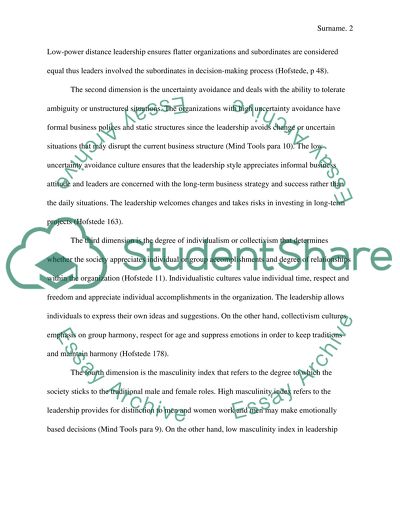Leadership and Hofstede's five dimensions Essay. Retrieved from https://studentshare.org/psychology/1685414-leadership-and-hofstedeaposs-five-dimensions
Leadership and Hofstede'S Five Dimensions Essay. https://studentshare.org/psychology/1685414-leadership-and-hofstedeaposs-five-dimensions.


